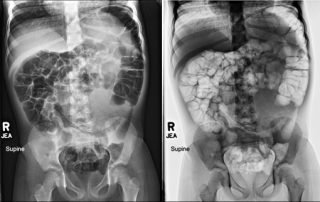A Sticky Case of “Splenomegaly”
A 6-year-old female presented with a two-day history of abdominal pain after being referred by her pediatrician for evaluation of "splenomegaly." The patient had been complaining of constipation for the past six days along with a few episodes of nausea and vomiting. On physical examination, a firm, non-tender mass was palpated extending at least 10 cm below the left costal margin.

